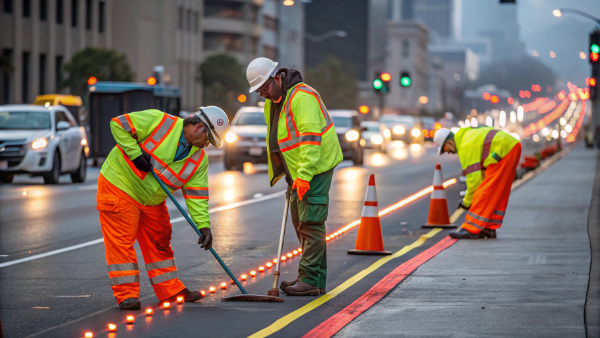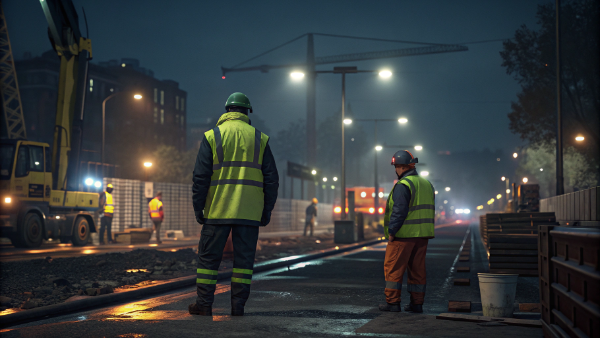Are you worried about your team's safety in low light? Poor visibility leads to serious accidents. Retroreflective clothing makes your workers highly visible and keeps them safe.
The secret is retroreflection. Reflective clothing contains tiny glass beads or prisms that catch light from sources like headlights and bounce it directly back. This makes you appear brightly lit to the driver.
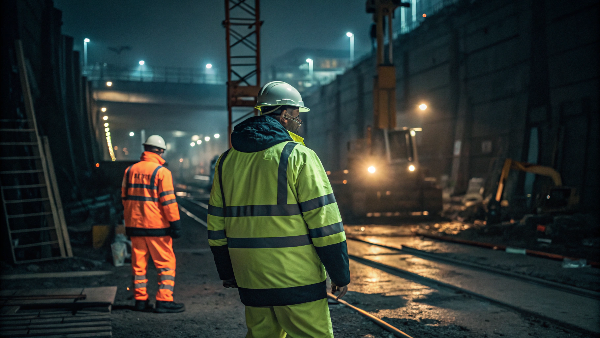
This simple-sounding technology is actually quite smart. It is not just about being bright; it is about sending light back in a very specific way. Understanding this helps you choose the best safety gear. Let's explore how this life-saving science works to protect your team on the job.
How does reflective clothing work?
Choosing the right safety gear can feel complex. Making the wrong choice puts your team at risk. Understanding the science behind reflective clothing helps you decide with confidence.
Reflective clothing works by using a special property called retroreflection1. Instead of scattering light, it sends a concentrated beam of light directly back to the original source. This creates a powerful, attention-grabbing glow.
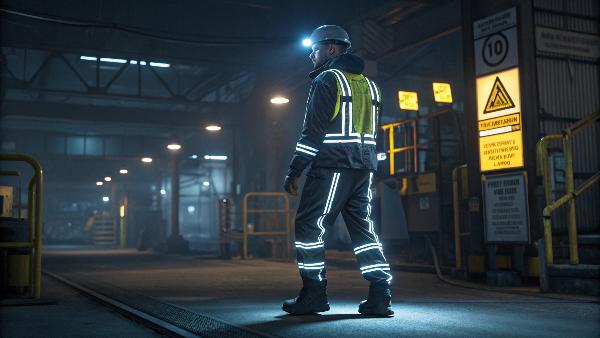
To understand how this works, we need to look at how different surfaces handle light. Most objects reflect light diffusely, scattering it in all directions. A mirror reflects light at an opposite angle. Retroreflective materials are different. They are engineered to return light along the same path it came from. This is why a person wearing a safety vest seems to glow so brightly to a driver at night. The car's headlights provide the light, and that light is returned directly to the driver's eyes. We use two main technologies to achieve this: microscopic glass beads2 and tiny engineered prisms. At Vissafetywear, our labs test these materials to ensure they meet global standards like EN ISO 204713 and ANSI/ISEA 107. This guarantees maximum performance for our clients.
| Reflection Type | How It Works | Best For |
|---|---|---|
| Diffuse Reflection | Scatters light in all directions | General visibility of an object's color |
| Specular Reflection | Bounces light at an equal, opposite angle | Seeing a clear image, like in a mirror |
| Retroreflection | Bounces light directly back to the source | High visibility in low-light conditions |
Does high-visibility clothing work?
You invest in high-visibility gear for your crew. But are you sure it is truly effective? Let's look at the evidence that proves its life-saving value.
Yes, high-visibility clothing4 works extremely well. It is proven to dramatically reduce accidents by making workers visible much sooner and from farther away, especially at night or in bad weather.
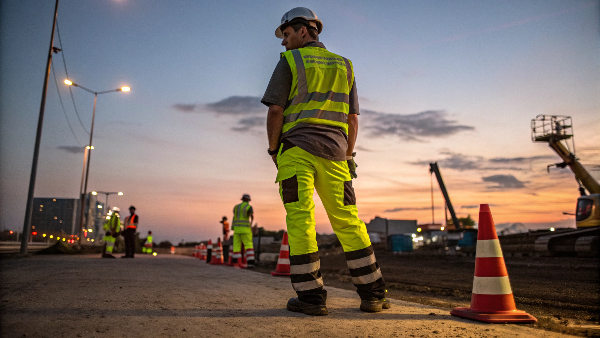
High-visibility clothing has two key parts that work together. The first is the fluorescent background material5. This bright material, often yellow, orange, or red, is great for daytime use. It reacts with the sun's ultraviolet (UV) rays, making the color appear to pop, even at dawn or dusk. The second part is the retroreflective tape. This tape does the heavy lifting at night. It does not create its own light, but it brilliantly reflects light from sources like vehicle headlights. I remember a client from a large logistics company in California. He told me their nighttime accident rate in the shipping yard dropped by nearly 40% after they made our ANSI Class 2 vests mandatory. This shows the real-world impact of using the right gear.
| Component | Primary Use | How It Works |
|---|---|---|
| Fluorescent Material | Daytime, Dawn, Dusk | Converts invisible UV light into visible light, making colors look brighter. |
| Retroreflective Tape | Nighttime, Low-Light | Bounces light directly back to the source (e.g., headlights). |
How does reflective tape work?
You see reflective tape on uniforms, signs, and vehicles. But do you know the technology that makes it shine so brightly? Understanding it helps you choose the best quality tape.
Reflective tape uses either microscopic glass beads or engineered microprisms. When light hits these structures, it is reflected internally and sent straight back to the source. This creates a highly concentrated, bright return of light.
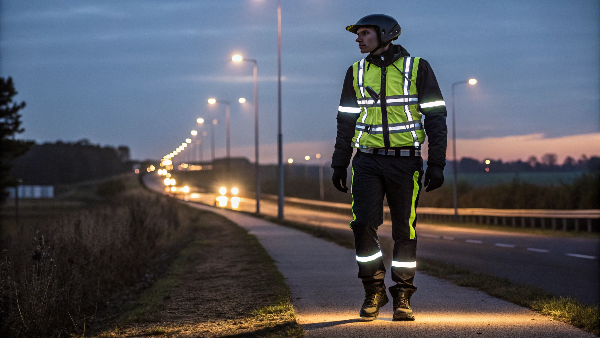
Let's dive deeper into the two main types of reflective tape technology. The first is Glass Bead technology. These tapes are filled with millions of tiny glass spheres. The front of each sphere is exposed, and the back is coated with a mirror-like finish. When light enters the bead, it is bent, hits the mirrored back, and is reflected straight back out toward the light source. The second, more advanced type is Microprismatic technology. This tape uses tiny, precisely shaped corner-cube prisms, similar to what you find on a bicycle reflector. When light hits one of these prisms, it bounces off the three internal surfaces and is sent back on its original path. This method is extremely efficient and creates a much brighter reflection. At Vissafetywear, we offer both types and can advise clients on which is best for their needs.
| Feature | Glass Bead Tape | Microprismatic Tape |
|---|---|---|
| Brightness | Good | Excellent / Superior |
| Durability | Good | Excellent |
| Angle Performance | Effective at direct angles | Effective over a wider range of angles |
| Cost | Lower | Higher |
| Best For | Standard uniforms, cost-sensitive projects | High-risk environments, long-lasting gear |
Can you put reflective tape on clothes?
Do you need to add visibility to your team's existing workwear? Applying tape the wrong way can ruin the clothing and compromise its safety. Let's learn the right way to do it.
Absolutely. You can add reflective tape to clothing, but you must use the correct type. There are sew-on tapes for heavy-duty use and iron-on tapes for a seamless look. The choice depends on the fabric and purpose.

There are two main ways to apply reflective tape to garments: sewing it on or using heat to apply it. Sew-on tape is the traditional choice for durability. It is stitched directly onto the fabric, making it very secure. This method is ideal for tough materials like cotton, denim, and heavy-duty polyester used in construction workwear. The downside is that it takes more labor to apply. Iron-on tape, also called heat transfer tape, is another popular option. It has a heat-activated adhesive on the back. You use a heat press to bond it to the fabric. This creates a smooth, seamless look and is great for lighter fabrics like polyester. It is also a good choice for waterproof jackets because it does not create holes from stitching. However, its durability depends on applying it with the right temperature, pressure, and time.
| Application Method | Pros | Cons | Best Fabrics |
|---|---|---|---|
| Sew-On | Extremely durable, very secure | More labor-intensive, needle holes can affect waterproofing | Canvas, Denim, Heavy Polyester |
| Iron-On (Heat Transfer) | Fast application, seamless look, no stitches | Durability depends on application, can peel if washed improperly | Polyester, Light fabrics, Waterproof shells |
What is the best reflective tape for clothes?
Choosing the right tape is a critical decision. The wrong choice can lead to poor visibility, failed safety inspections, and a waste of money. Let's break down the options.
The "best" tape depends on your specific needs. For maximum brightness and durability, microprismatic tape is superior. For cost-effective solutions, glass bead tape6 is a great choice. For high-heat jobs, you must use FR-rated tape7.
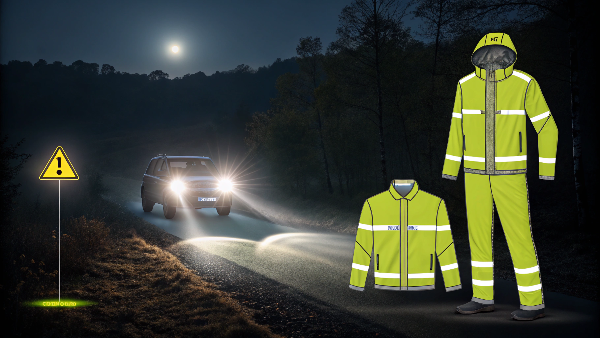
To pick the best tape, you must consider the job, the environment, and the garment fabric. For example, a firefighter needs a completely different tape than a road crew worker. We help our clients navigate these choices every day. A client like Danny Cheng, who sells to the North American market, often needs a mix. He might use a durable, segmented prismatic tape for a premium, breathable jacket to help his brand stand out. For his standard vests, a high-quality glass bead tape meets ANSI standards perfectly while managing costs. The most important factor is always compliance. The best tape is one that is certified to meet the safety standards required for your industry, such as ANSI/ISEA 107 or EN ISO 20471.
| Tape Type | Key Feature | Best For | Considerations |
|---|---|---|---|
| Standard Glass Bead | Cost-effective, reliable | General workwear, large-volume uniforms | Good brightness, standard durability |
| Microprismatic | Highest brightness, very durable | High-risk jobs (e.g., highway work), premium gear | Higher cost, superior performance |
| Flame Resistant (FR) | Will not melt or drip when exposed to flame | Firefighting, oil & gas, welding | Must be used on FR-rated garments to maintain protection |
| Segmented Tape | Flexible, breathable | Activewear, jackets, shirts where comfort is key | Allows fabric to stretch and breathe underneath the tape |
Conclusion
Understanding retroreflection helps you choose effective high-visibility clothing. From tape type to application, the right choice ensures your team is seen and safe, a commitment we share at Vissafetywear.
-
Explore this link to understand the science behind retroreflection and its importance in safety gear, enhancing visibility and safety. ↩
-
Learn how microscopic glass beads improve the effectiveness of reflective clothing, ensuring safety in low-light conditions. ↩
-
Discover the significance of EN ISO 20471 standards in ensuring the quality and safety of reflective clothing for workers. ↩
-
Explore this link to understand how high-visibility clothing can enhance safety and reduce accidents in various work environments. ↩
-
Discover the properties of fluorescent materials and their effectiveness in improving visibility during the day. ↩
-
Learn how glass bead tape offers a cost-effective solution while meeting safety standards for general workwear. ↩
-
Understand the importance of FR-rated tape for safety in high-heat jobs, ensuring protection against flames. ↩

